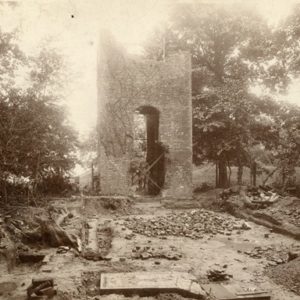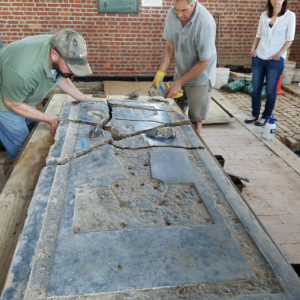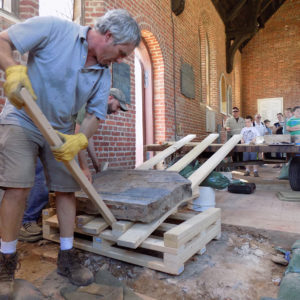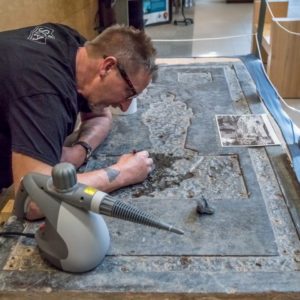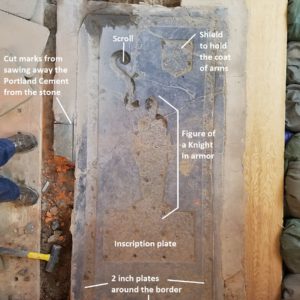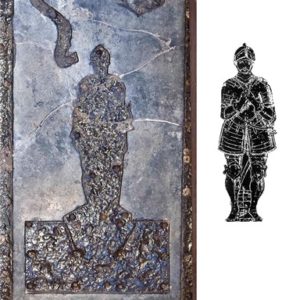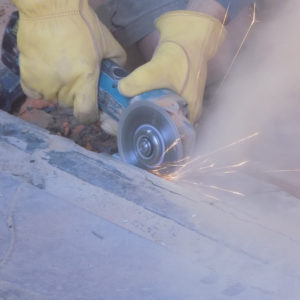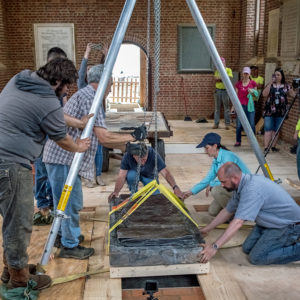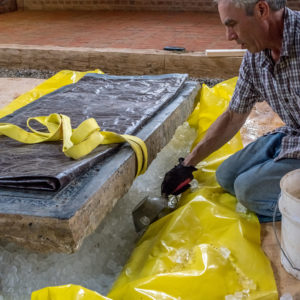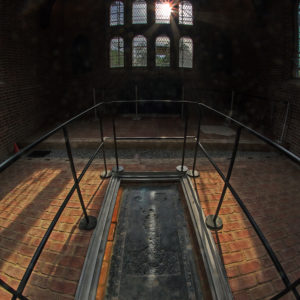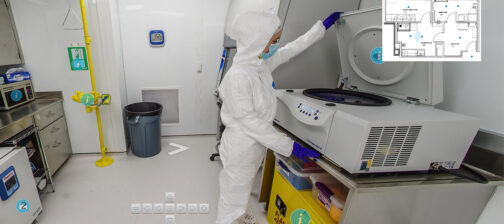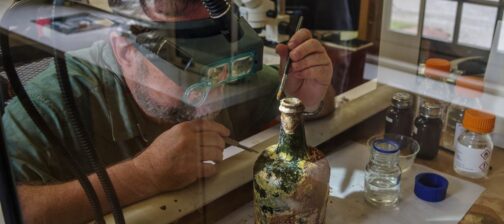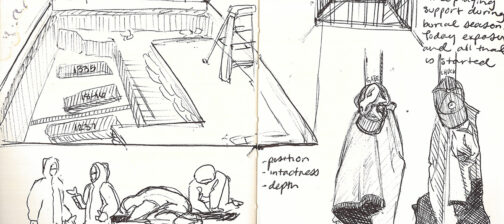The Knight’s Tombstone was discovered by APVA excavators in 1901 prior to the 1907 construction of the Memorial Church. Carved from Belgium limestone, the tombstone is approximately six feet long and weighs around 1,000 pounds. Also known as a ledger stone, the face had carvings of an effigy of a knight, a shield which would have contained a coat of arms, a scroll, and a border. These carved areas would have all contained brass inlays. This stone is attributed to Sir George Yeardley who died in 1627.
The stone was broken when discovered and was repaired with Portland cement, which is now known to be a destructive method. In 2010, the decision was made move and repair the stone. This process would take two years to complete. First, the stone was removed from its position by the southern entrance of the Memorial Church. This was accomplished using ramps and rollers. The stone came apart in the spots previously repaired. The Portland cement was gently removed using a hammer and chisels. Once all the cement was removed, the stone was then mended using a mix of epoxy and slate powder for color.
Once mended, the work of removing a lacquer which was used as a coating over the stone could be removed. This was a long process which required the use of scalpels and steam. Finally, the stone was mended, cleaned, and placed in the spot determined by excavations within the church. The stone now lays within the Memorial Church in a prominent position above where the remains of its owner Sir George Yeardley would have lain.
related images
- Overview of APVA excavations around the church tower, with “Knight’s Tombstone” in foreground
- JR Conservator Michael Lavin and Monuments Conservator Jonathan Appell arrange the fragments of the Knight’s Tombstone on the cart
- Jonathan Appell and Michael Lavin moving the Knight’s Tombstone up on top of the cart. Over the next few weeks, the stone will be cleaned in preparation to be mended back together.
- Dan Gamble completes the conservation of the Knight’s Tombstone by removing a water-based glue someone in past had used to polish the stone.
- Carved areas for missing brass inlays on the Knight’s Tombstone
- Left: The knight’s tombstone. Right: A conjectural image of what the original brass inlay of the knight might have looked like based on surviving English examples.
- Monuments Conservator Jonathan Appell saws away the Portland cement skirt bordering the Knight’s Tombstone in preparation for the stone’s removal
- The team lowers the Knight’s Tombstone
- Monuments Conservator Jonathan Appell scoops away excess water and ice from around the stone as it melts into place
- The Knight’s Tombstone in the Memorial Church



